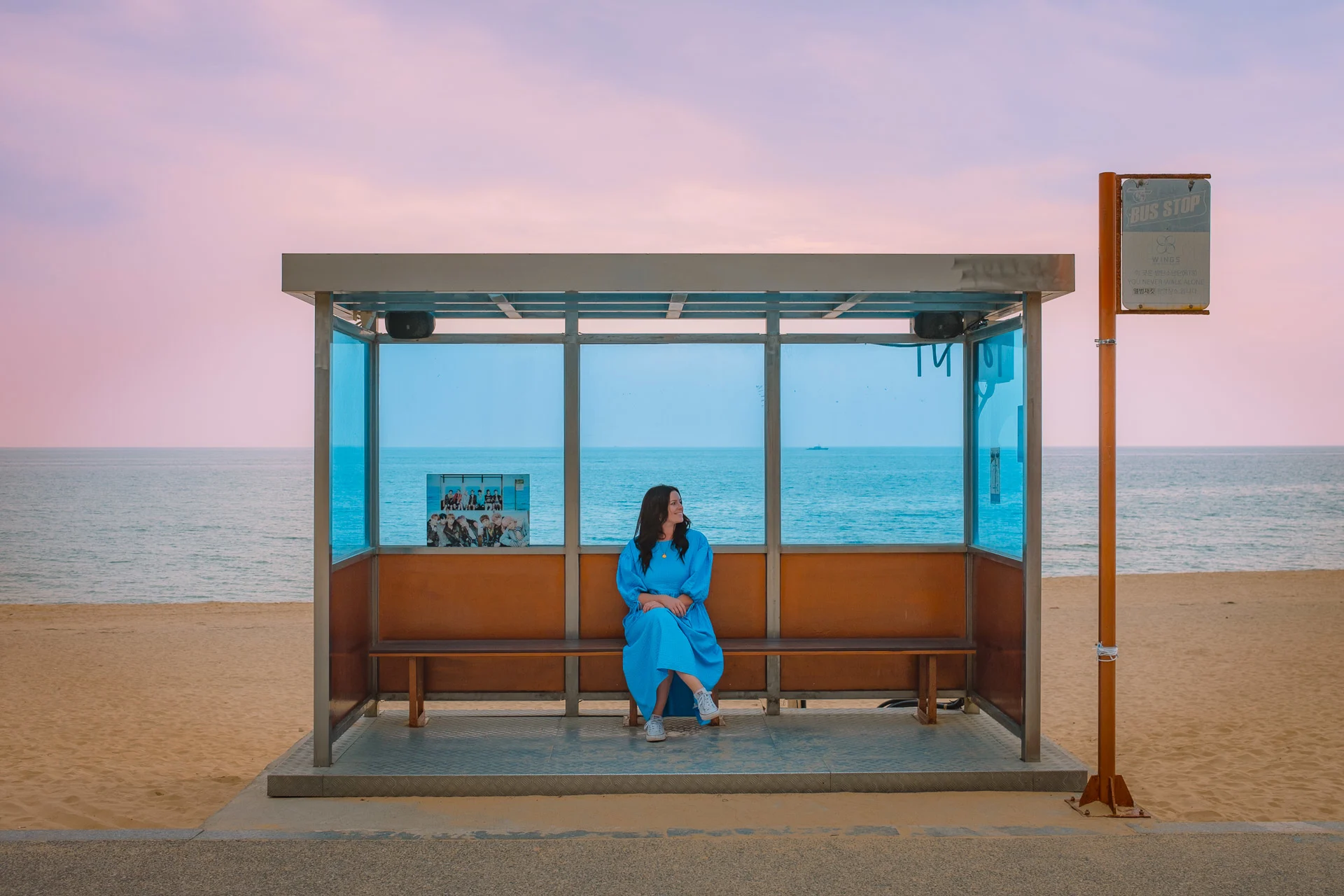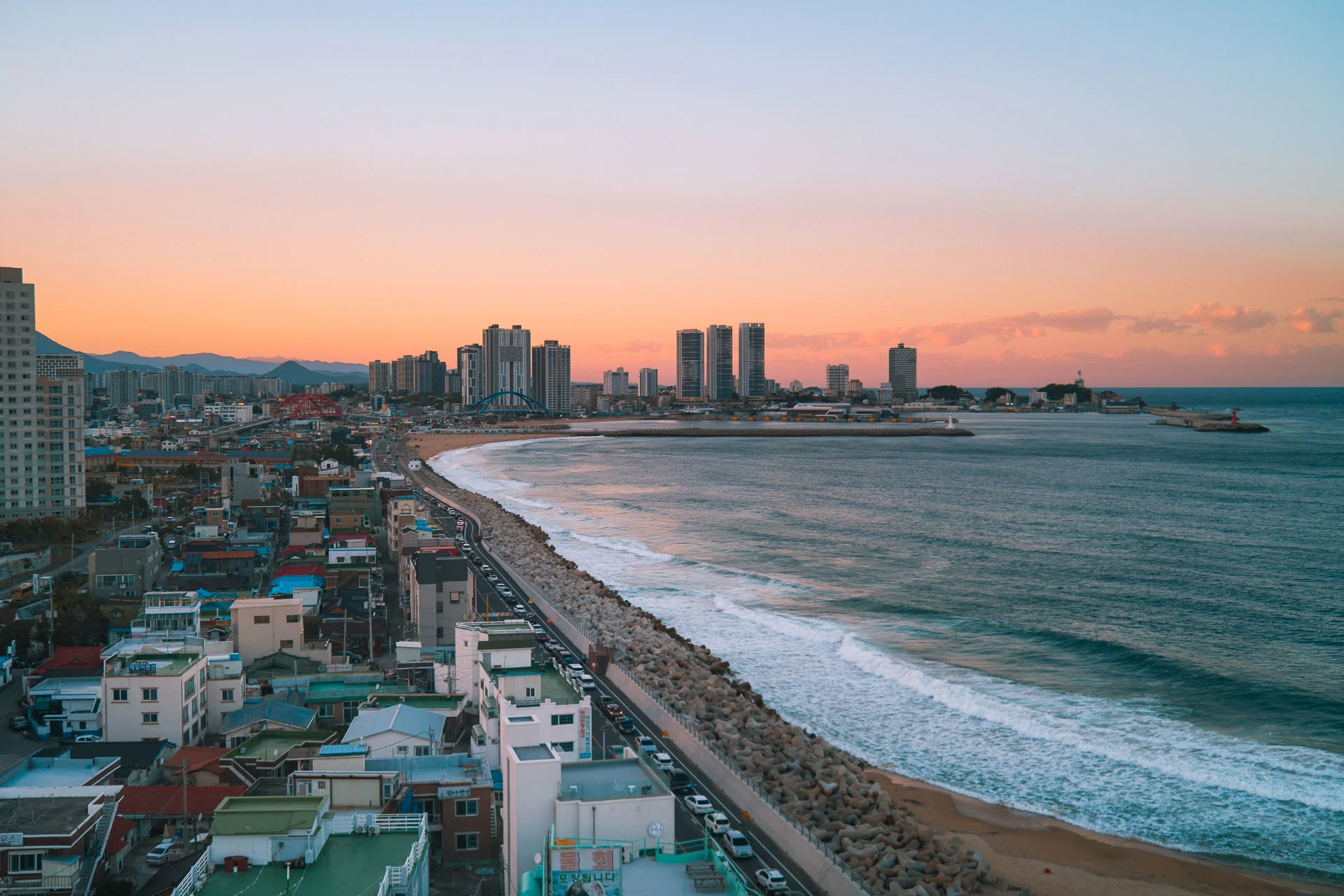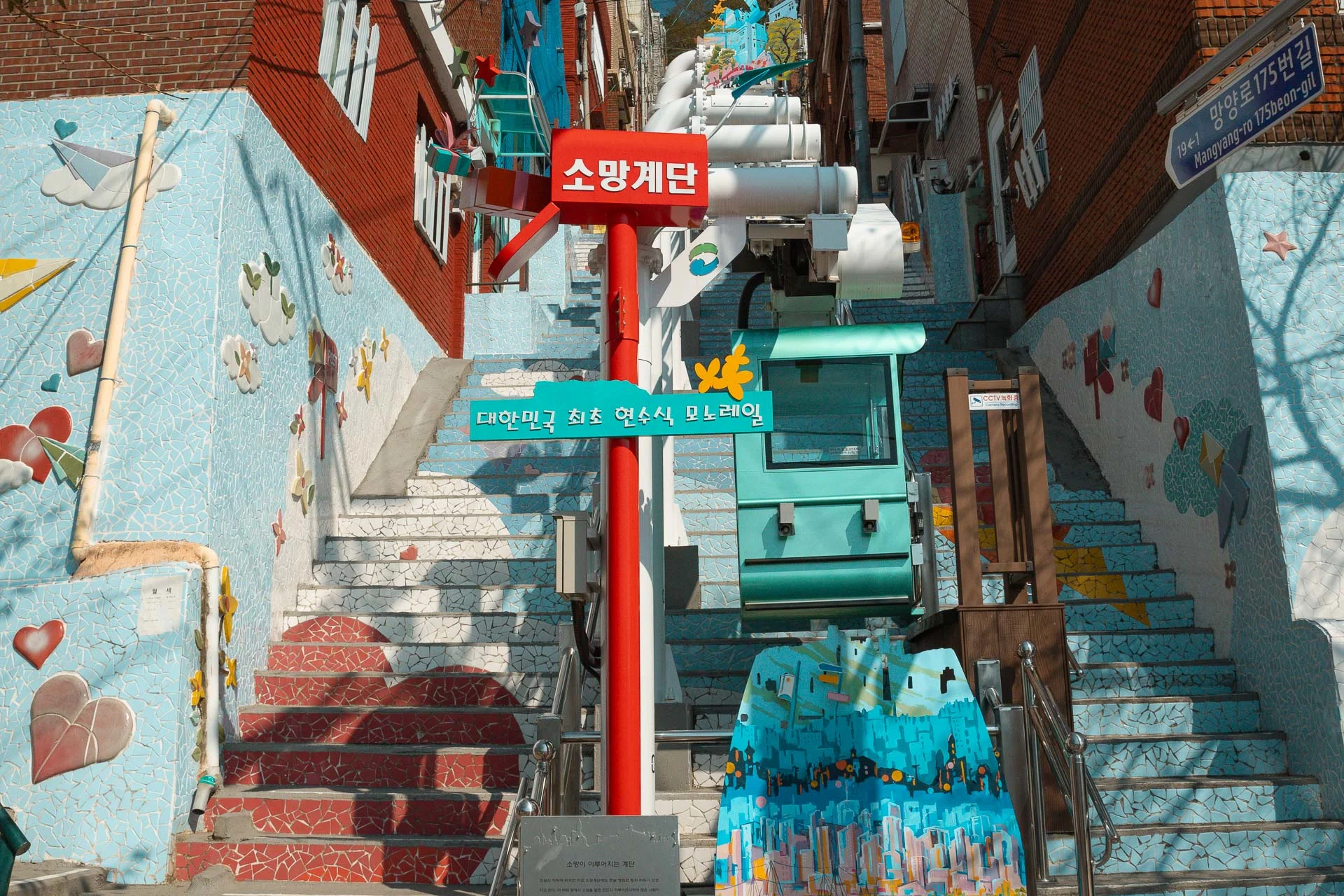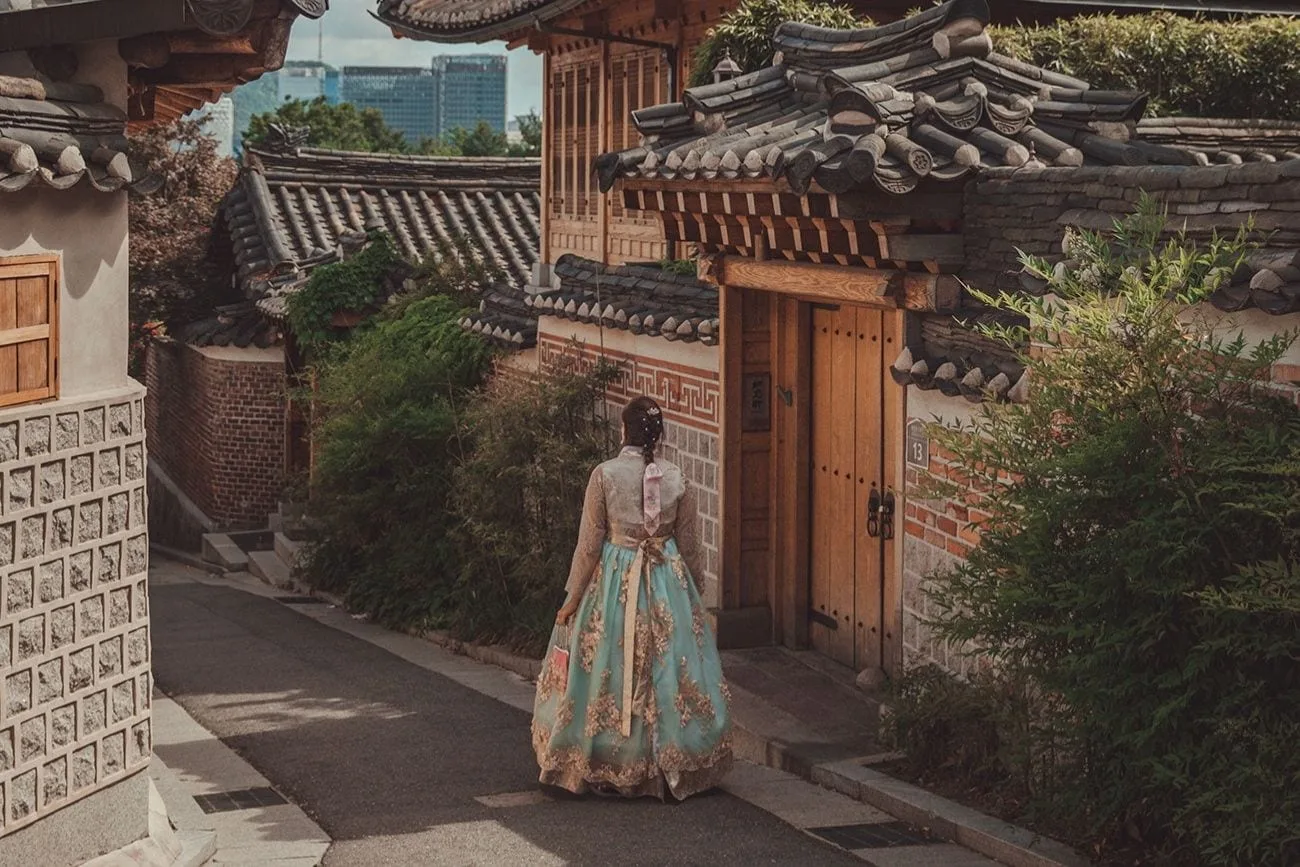Located in the Yeongdo-gu island in the city of Busan, Bokcheonsa Temple offers a serene escape amid urban life. Surrounded by lush greenery, the temple has a storied past and plays a significant role in the region’s history and culture. Beautiful by day, and absolutely stunning during sunset and night time, Bokcheonsa Temple is an important site not only for Buddhist religious practices but also for visitors seeking to explore Busan’s top sunset spots.

Originally known as Haeun Temple, the temple dates back to the Goryeo Dynasty, giving it a history of over a thousand years. It offers a breathtaking view of Namhangdaegyo Bridge and Songdo from the Observation Deck. Bokcheonsa Temple is a must-visit destination and one of the most beautiful temples in Busan and it was my favorite thing to do during my visit to South Korea in 2023.
@iwanderlista I’ve traveled all over South Korea but this sunset spot in Busan is in my top 5 places to visit HANDS DOWN. Wow, I almost cried up there it was so perfect. And i was the only one there too 🥹 It’s called 복천사 and you bet I’ll post a video with all the details soon! #busan #busantravel #busantrip #koreatrip #koreatravelguide #복천사 #koreatips #busansunset ♬ take a moment to breathe. – normal the kid
History of Bokcheonsa Temple
Bokcheonsa Temple traces its origins back to the Goryeo Dynasty, specifically when Monk Naong Hyegeun founded it in 1358. Naong was an influential figure in Korean Buddhism, he was a revered Buddhist monk who imparted wisdom to the king and whose teachings have made a significant impact in shaping the faith in Korea.

In the early days, during the Goryeo Dynasty, the temple enjoyed a prosperous period, as Buddhism thrived throughout Korea. But the temple experienced its share of adversity, particularly during the Joseon Dynasty when anti-Buddhist policies were enforced.
During the Joseon Dynasty, Bokcheonsa Temple faced significant damage due to invasions from Japanese pirates in the late 16th century. Despite these challenges, the temple held firm and withstood time, preserving ancient Busan history and culture elements within its walls.

The temple complex features an array of artifacts and structures, highlighting the rich history of the temple and Busan area. Some of the notable structures within the temple grounds include:
- The Stupa, a monument representing Buddha, which hints at the temple’s spiritual significance.
- The Bokcheon Museum, which showcases relics and treasures collected from various historical periods of the temple’s existence.
Furthermore, it is important to mention the Jikjisa Temple, which has strong connections to the Bokcheonsa Temple. Kim Seonji, a disciple of Monk Naong Hyegeun, took on the responsibility of propagating his master’s teachings and was actively involved in the restoration of the Jikjisa Temple.

In 1921, the traditional Buddhist art sculptor Yang Wan-ho, hailing from Busan and Yeongnam province, undertook the task of revitalising the temple. Under his guidance, the main temple was reconstructed, and efforts were made to preserve and propagate the traditional Buddhist art forms, including paintings and statues of the Buddha.
Bokcheonsa Temple boasts an impressive array of Buddhist properties, making it a cultural treasure trove in the Yeongdo-gu region. Notable among its possessions are the Painting of Amitabha Platform, recognized as a City and Province Tangible Cultural Property, as well as several other tangible cultural properties that serve as representative assets of Buddhist culture in the Busan region.
Structure and architecture
Main buildings and Artifacts
The Bokcheonsa Temple, located in Busan, boasts several elegant structures and artifacts that reflect its rich history. The Daeung-jeon Hall, the temple’s main hall, houses a triad of statues representing Seokgamoni-bul, known as the historical Buddha, along with his two attendants. The hall is adorned with exquisite floral latticework and impressive shinjung taenghwa paintings. Moreover, the temple contains a beautiful Brahma Bell and a mokeo, a wooden fish drum, both displayed in the bell pavilion.
Another significant hall in Bokcheonsa Temple is the Myeongbu-jeon Hall, where devotees pay homage to Jijang-bosal, the Bodhisattva of the Afterlife. Additional halls found within the temple grounds include the Chilseong-gak Hall, Bokcheon-gak Hall, and the Sanshin/Dokseong-gak Hall, also known as the shaman shrine hall. And it is in front of Sanshingak Gall the Observation deck is located, where you will see the stunning views of both the temple and the city!

Layout and Landscaping
The layout and landscaping of Bokcheonsa Temple create a harmonious balance between nature and the sacred architecture. This is particularly noticeable in the temple’s main courtyard, where several buildings are arranged around a central square. The Jong-ru Pavilion, serving as the entrance to the temple, is characterized by colorful dancheong paintings and intricate gwi-myeon patterns, blending seamlessly into the natural surroundings.
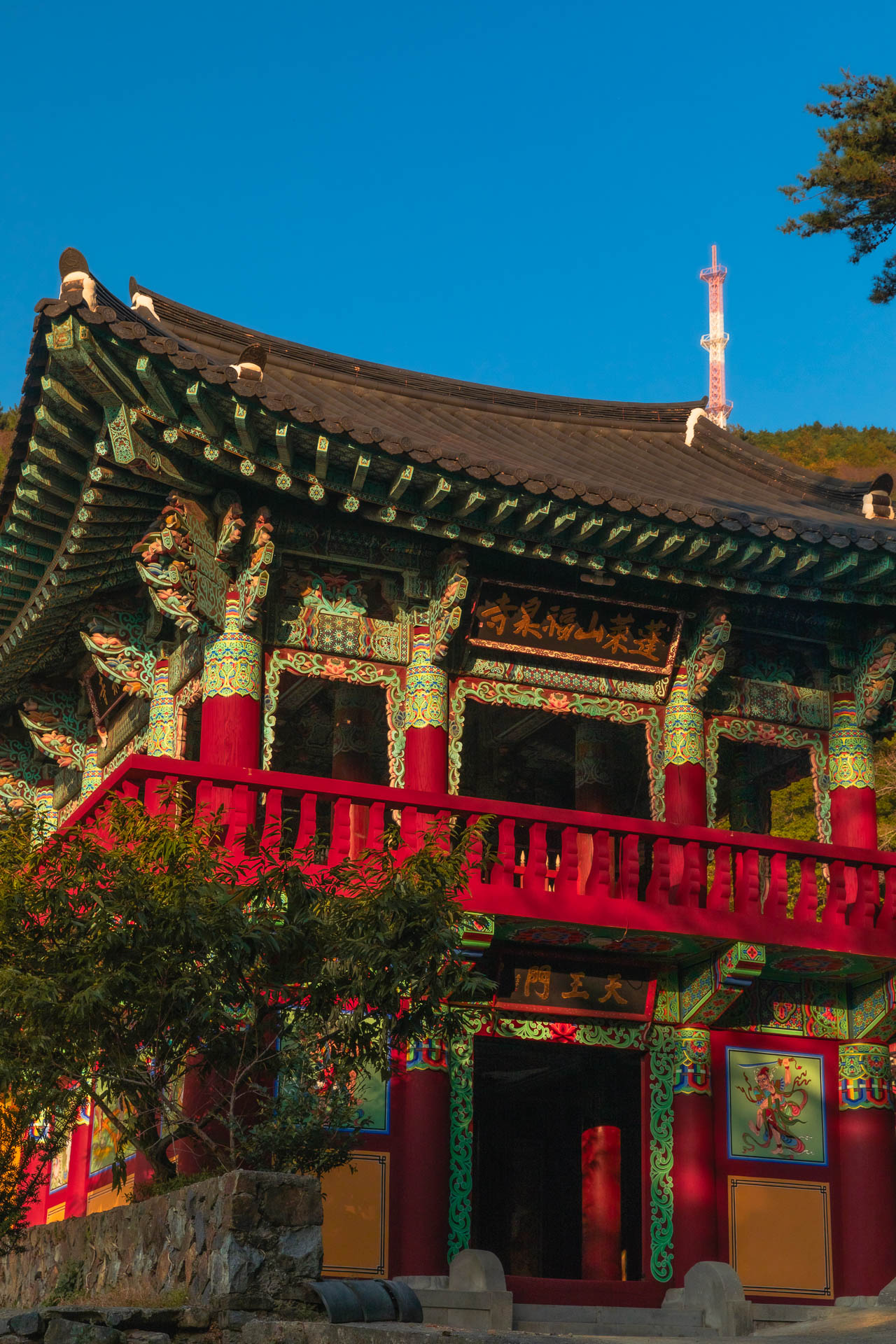



The landscaping includes stunning shimu-do murals and an array of vibrant Buddhist paintings adorning the walls of various halls. The Bokcheonam Hermitage, located within the temple complex, showcases Buddhist-inspired landscaping, providing a serene setting for quiet contemplation.
Visiting Bokcheonsa Temple
Best time to visit
The best time to visit is an hour before sunset. You can see the sunset time on any weather app. Arriving an hour before, you will see it both in the beautiful golden glow, as well as the night view.
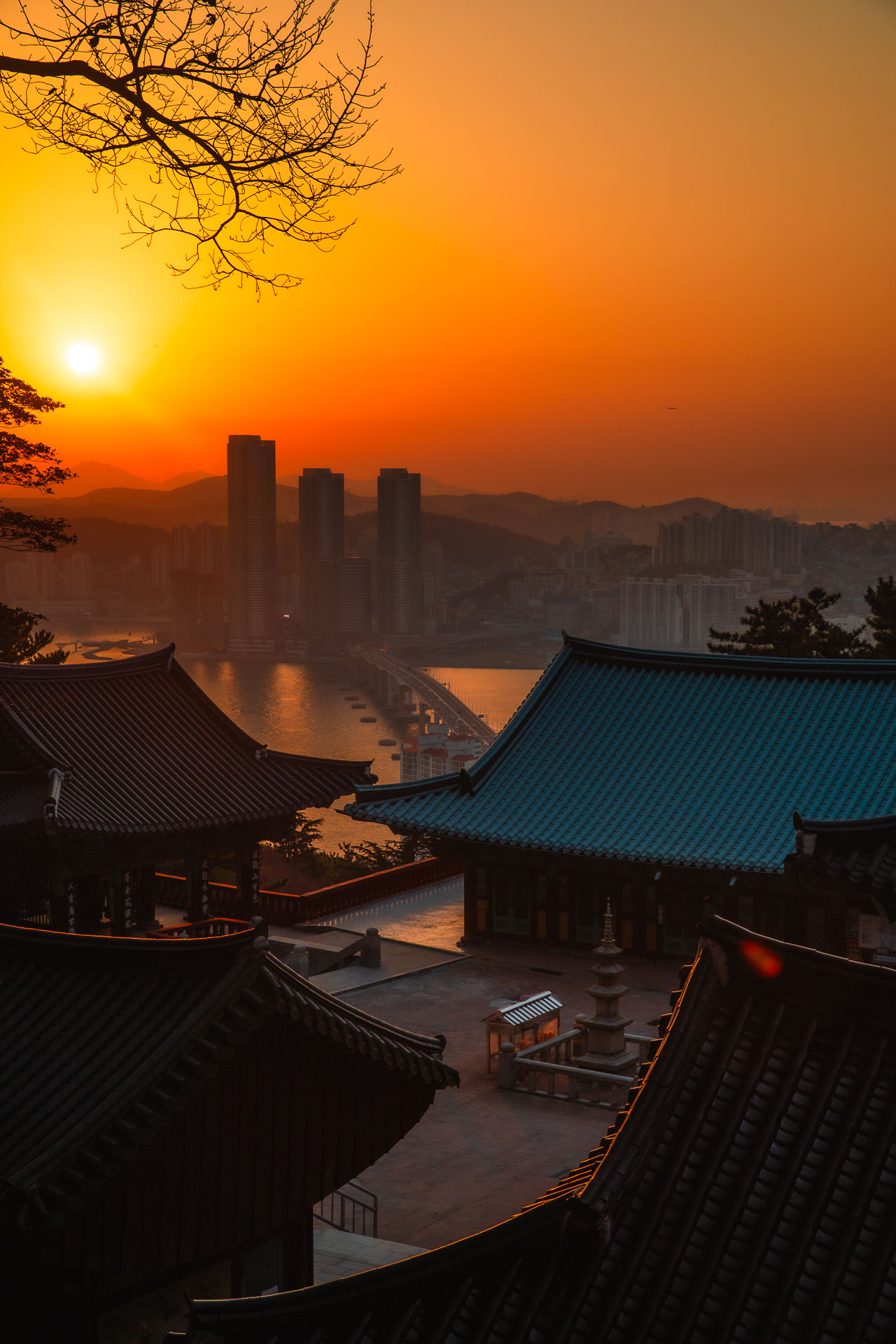
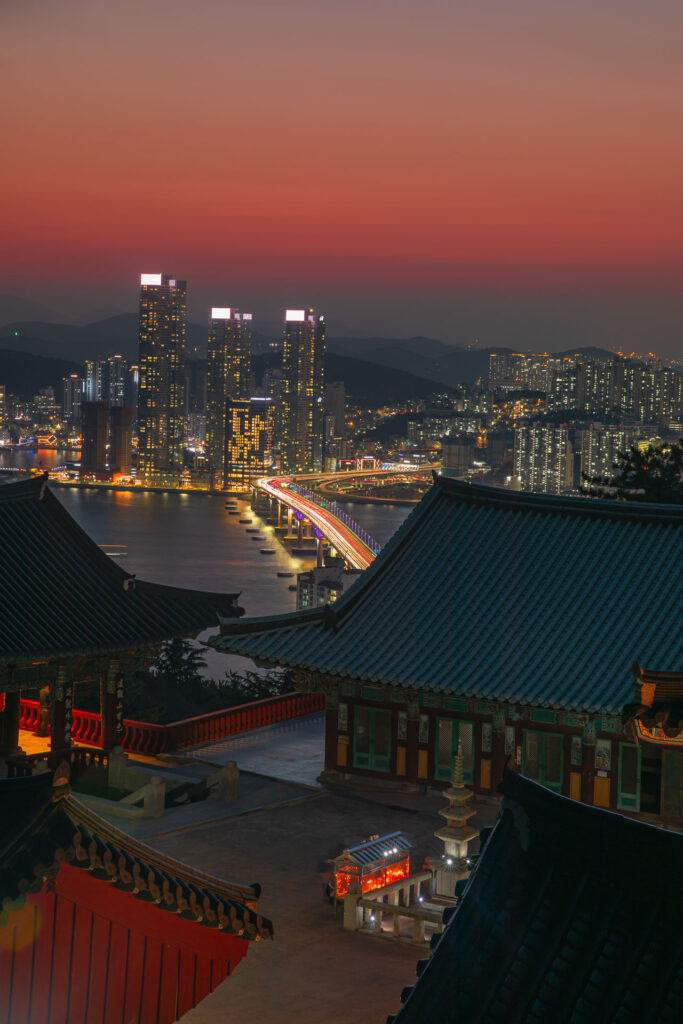
Getting there
Bokcheonsa Temple is located on Yeongdo-gu Island, about an hour away from Gwangalli Beach (since most people tend to stay there). The easiest way to reach the temple is by public transportation and a taxi. I highly recommend taking a taxi all the way because the hill is incredibly steep and it’s better to walk down than up.
I visited Huin Ford Culture Village before heading to Bokcheonsa and took a taxi from there. The taxi driver was moaning about the uphill but he made it all the way up without a problem. It’s also general knowledge that taxi drivers in Korea tend to be a little dramatic so don’t worry if he starts huffing and puffing hehe.

Exploring the Temple Grounds
Upon arriving, you can begin exploring the rich history and traditional culture that Bokcheonsa Temple has to offer. Some highlights include:
- The Stupa is an ancient and revered Buddhist monument located within the temple grounds. It is believed to house the remains of an enlightened monk.
| Temple Grounds Highlights | Description |
|---|---|
| Cheonwangmun Gate | Entrance gate guarded by four heavenly kings. |
| Haeunam Hermitage | A unique annex of Bokcheonsa Temple |
| Mt. Bongraesan | Surrounding mountain with hiking trails |
| Budo | Stone pagodas and statues |
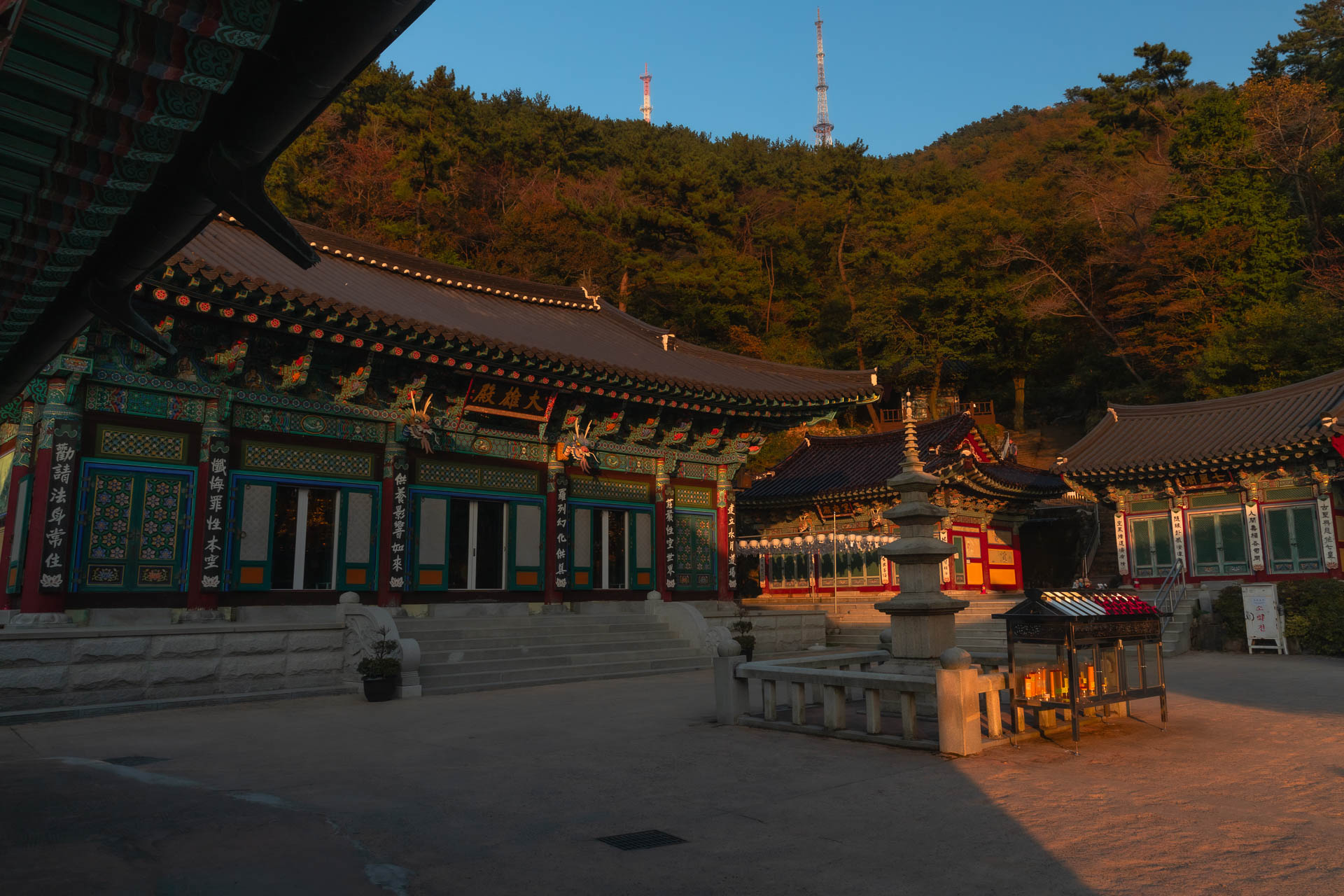
The temple grounds also house several Busan Tangible Cultural Properties, including:
- Grazing Horses: Traditional Buddhist artwork depicting horses in a natural setting.
- Wooden Fish Drum: A traditional percussion instrument used in Buddhist ceremonies.
- Ox-Herding Murals: Paintings that help illustrate the path to enlightenment.
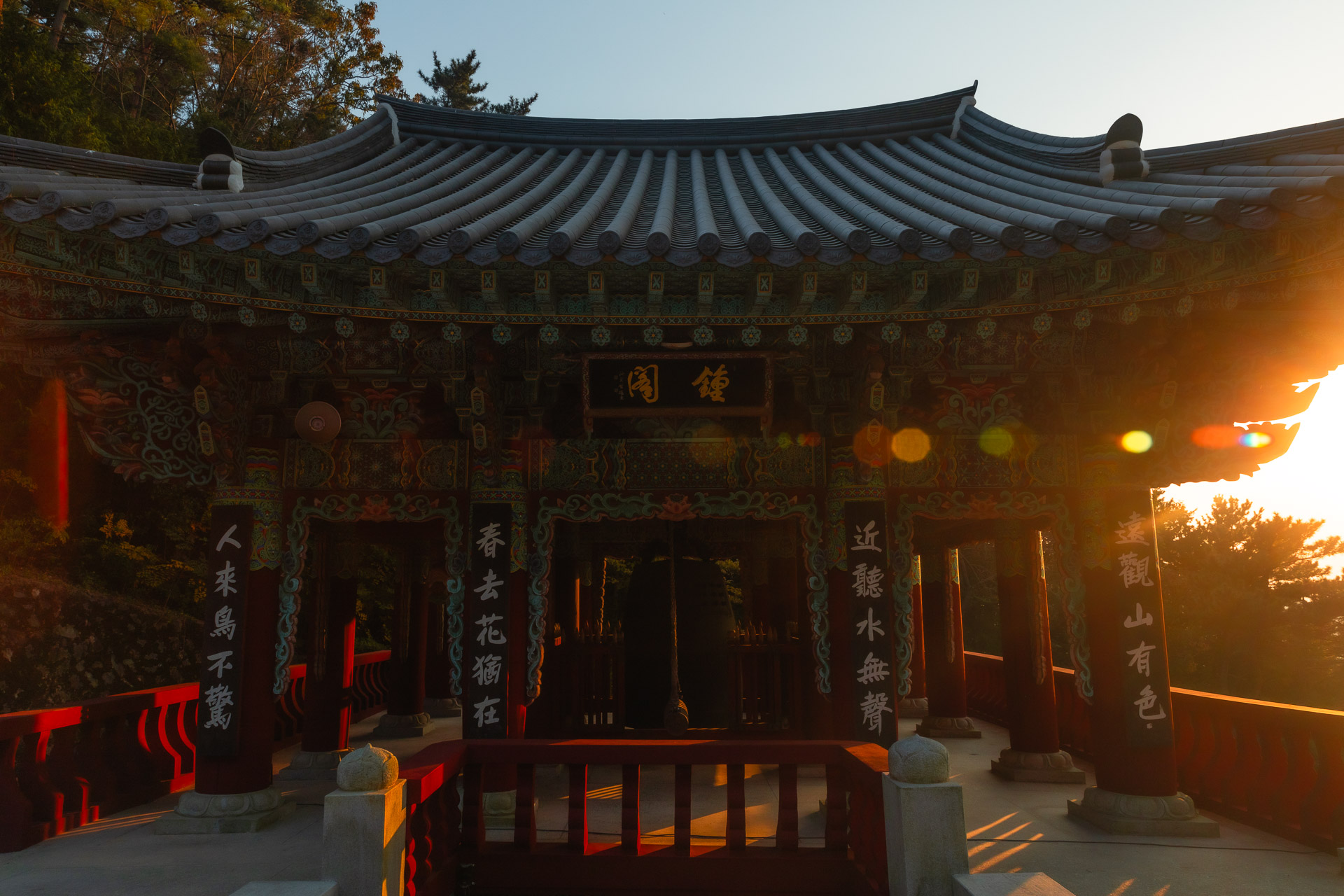
The temple today
Today, Bokcheonsa Temple continues to be a place of pilgrimage for both residents and visitors, drawn to its tranquil surroundings and the wealth of Buddhist heritage it safeguards. The temple’s role in preserving and promoting traditional Buddhist art forms underscores its commitment to upholding the cultural legacy of the region.
Bokcheonsa Temple stands as a beacon of Buddhist culture and heritage, preserving centuries-old traditions and artifacts that enrich our understanding of Korea’s religious and artistic legacy. Its enduring presence and commitment to upholding the essence of Buddhism make it a revered institution, and its collection of Buddhist properties serves as a testament to the enduring legacy of the faith in the region. As visitors continue to flock to this tranquil sanctuary, Bokcheon Temple remains a living testament to the enduring spirit of Buddhism in Korea.


